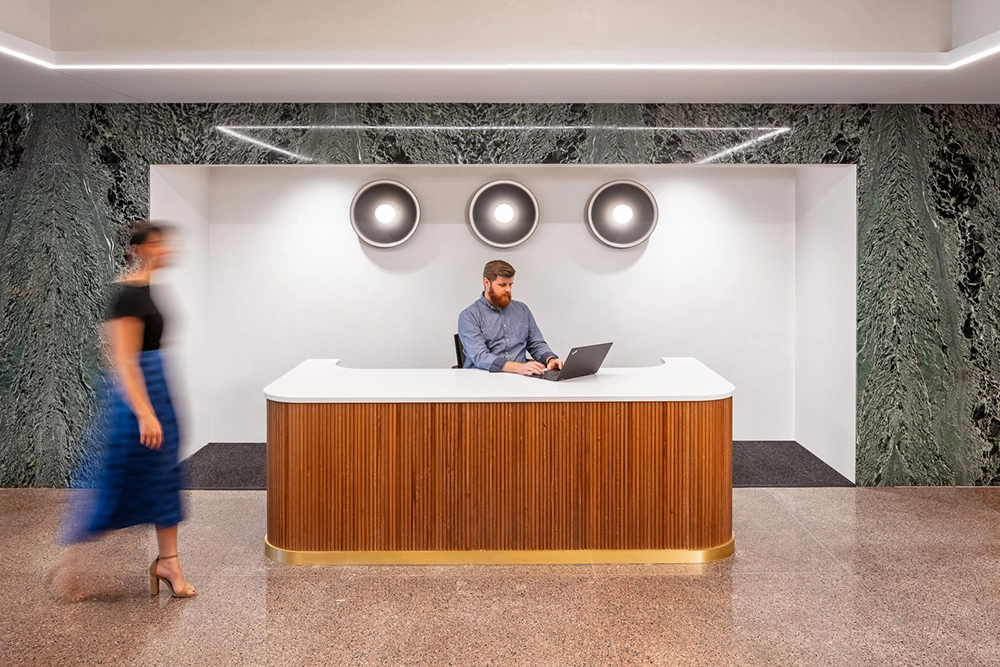MNCAR Sponsor Article: 3701 Wayzata Blvd. Viable, Successful Option for Both Developers and Tenants
In just 90 days, 82% of the modernized Minneapolis office building has been leased to three major tenants.

Twin Cities commercial real estate professionals are recognizing the potential reuse of older buildings by upgrading, retrofitting and repurposing them and bringing them to the market as multitenant office properties.
These adaptive reuse projects allow developers to retain the building's historic integrity and character while also meet the changing needs of today's office tenants.
These buildings are highly attractive given their prime locations and aesthetic charm. Developers and owners are marketing them to tenants that understand the economic value of the repositioned space, which is priced significantly less than new construction.
It has become clear that tenants are quickly migrating toward these renovated and reimagined vintage buildings.
If you need proof that adaptive reuse can be a viable and successful option in today's Twin Cities office market, look no further than the adaptive reuse of the former Target West campus at 3701 Wayzata Blvd. in Minneapolis.
Opus acquired the mid-century, 310,000-square-foot, single-tenant office building in mid-December 2018 from Target Corp., which had occupied the building since 1994. The building, which sits on a 25-acre campus, was initially built in 1954 for Prudential Insurance.
Opus is converting the building on the western edge of Minneapolis -- on Interstate 394 overlooking Brownie Lake -- into a contemporary, multitenant office building offering unparalleled amenities and ample, free parking for tenants.
The building is located between downtown Minneapolis and St. Louis Park's West End in the highly sought-after I-394 office corridor.
In just 90 days since Opus closed on the purchase of the property, it has signed three major leases totaling roughly 245,000 square feet, which means the building is effectively 82 percent leased. Tactile Medical Systems has leased approximately 110,000 square feet on the second and third floors of the eight-story building and will move into the space in September. Hair salon chain Regis Corp. will relocate its headquarters to the building in first quarter 2020, occupying 65,000 square feet on the top four floors. In addition, SRF Consulting will occupy roughly 70,000 square feet and take occupancy in third quarter 2020.
Approximately 55,000 square feet remains available on the fourth floor, and potential tenants have been touring the space.
This vigorous leasing activity clearly demonstrates how adaptive reuse has become an attractive option for office tenants, as they look for highly-amenitized and creative space to attract and retain top talent in a tight job market while still managing their occupancy costs. Target Corp. took immaculate care of the building and invested in its real estate, and Opus is preserving the 1950s feel of the building by retaining much of the original materials including the 1950s-era marble wall coverings and terrazzo flooring.
Meanwhile, Opus is investing in key capital improvements including a cafeteria with indoor and outdoor seating, a bike room and a rooftop amenity deck with a clubhouse and bar. The building already has a fully-equipped fitness center.
Opus is also opening up the building to add more natural light. The company cut open the northeast corner to add windows that will give tenants views of downtown Minneapolis, West End and nearby parkland and lakes.
The base building improvements are scheduled to wrap up in August following a seven month-improvement schedule.
Make sure your adaptive reuse project 'checks all the boxes'
There are specific demand drivers that make an adaptive reuse project viable. They include location, lack of new office space in the market, opportunity to see and touch space, accelerated project timeline and companies working very differently.
Location
With any commercial real estate project, location remains king. An adaptive reuse project's financial feasibility relies heavily on its location. In the Twin Cities, there are certain geographic submarkets where there's significant opportunity for adaptive reuse. One such submarket is the highly-desirable office corridor along I-394, which historically boasts very low vacancies.
Lack of new office space in a market
New office space coming to the Twin Cities market is very limited relative to the existing inventory. Most new office space delivered, with a few exceptions, has been build-to-suit developments, meaning there has been little opportunity for multitenant users in the market for new space.
Opportunity to see, physically touch space
An adaptive reuse allows prospective tenants the opportunity to actually walk through the physical space rather than having to imagine what it will look like. While users have to re-imagine how they will use the space, they can begin to make that mental connection of how they can work and occupy the space.
Accelerated project timeline (speed to market)
There is a much shorter construction timeline for an adaptive reuse than new construction, meaning the space can come on the market and be occupied by a user quickly. Some tenants do not have the ability to wait two to two and a half years for ground-up construction. They need space inside of 12 months. For the building owner, the rehabbed building can be leased up and generate revenue quickly.
Companies are working very differently
As companies adapt to the modern workforce and how their employees are working differently, so, too, will their office spaces. Today's tenants demand fitness, a bike lounge, on-site food and a rooftop deck as well as flexible, collaborative and creative office space to provide alternative work environments for their employees.
These previously single-tenant buildings provide the space to create a full amenity package including rooftop decks, fitness and collaboration space. While each building is distinctive, flexibility and creativity are essential elements to successfully positioning a compelling market-responsive solution.
Building's distinct character
The character and unique architectural elements of an older building cannot necessarily be replicated in the construction of new glass towers. For example, many users are attracted to the character of a 1950s vintage building and its many features including marble wall coverings and terrazzo flooring. If incorporated thoughtfully, existing finishes respect the original character of the building while simultaneously offering a fresh, vibrant new experience for tenants. Additionally, exposing some of the structural elements within older buildings allows users to create truly unique space.
This article originally ran in MNCAR's e-newsletter.
Article Type: Blog Post
Topics: Minneapolis | Construction


